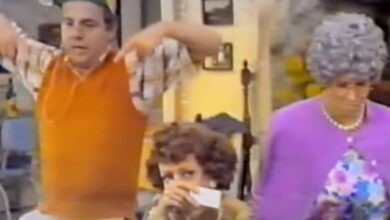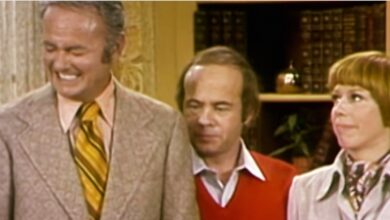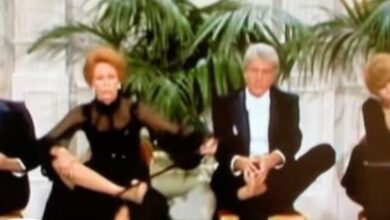The Hollies’ ‘Bus Stop’ Propelled the British Invasion to New Heights in 1966
By the middle of the 1960s, The Hollies had already earned a reputation as one of the most consistent and melodically sharp bands in the British pop-rock scene. But it wasn’t until 1966, with the release of Bus Stop, that they achieved true international acclaim. Released in June of that year, the single climbed rapidly, landing in the Top 5 on both the U.K. and U.S. charts. Its irresistible hooks and storytelling charm made it a standout hit of the British Invasion era.
Originating from Manchester, The Hollies featured Allan Clarke on lead vocals, Graham Nash handling rhythm guitar and harmonies, Tony Hicks on lead guitar, Eric Haydock on bass, and Bobby Elliott on drums. Their signature style—upbeat, harmony-driven pop—helped distinguish them from other British bands of the time. While many groups leaned heavily on blues and R&B influences, The Hollies focused on polished arrangements and vocal precision, winning over a wide audience on both sides of the Atlantic.
Unlike their earlier compositions, which were mostly written in-house by members Clarke, Nash, and Hicks, Bus Stop came from the pen of a young but gifted songwriter, Graham Gouldman. Still in his teens at the time, Gouldman had already penned hits for other acts like The Yardbirds and Herman’s Hermits. With Bus Stop, he delivered a lyrical gem that The Hollies immediately recognized for its hit potential, and their interpretation turned it into a career-defining classic.
The track narrates a sweet and relatable romance that blooms at a rainy bus stop. Its conversational lyrics and gentle humor capture the innocence and spontaneity of young love, standing out among more typical pop songs of the time. What set it apart further was the full arc of the narrative—by the end of the song, the couple has gone from strangers to newlyweds, offering listeners a complete love story in under three minutes.
Recorded at the legendary EMI Studios in London—later known worldwide as Abbey Road Studios—the production of Bus Stop was overseen by Ron Richards. The bright, twangy guitar riff forms the backbone of the song, while Clarke’s lead vocal is warmly supported by the flawless harmonies of Nash and Hicks. Bobby Elliott’s precise drumming adds subtle complexity to the beat, and the clean arrangement lets each element shine without overcomplication. The song’s simplicity masks the craftsmanship behind its design.
The moment Bus Stop hit the airwaves, it was met with praise from critics and fans alike. Its success in the U.S. was a breakthrough, giving the band a foothold in the American market that had eluded many of their contemporaries. This opened the door for stateside tours and appearances that would help The Hollies establish themselves as major players in the international music scene, not just as U.K. chart regulars.
The song also played a key role in the evolution of popular music during the 1960s. Its structured narrative and lyrical sophistication helped pave the way for the more story-driven songwriting that would define the latter half of the decade. In an era often dominated by songs about heartbreak or rebellion, Bus Stop offered something fresh—a romantic tale grounded in everyday experience, elevated by melody and harmony.
Following the widespread popularity of Bus Stop, The Hollies found themselves elevated to a new level of pop stardom. It solidified their identity as creators of sharp, hook-filled pop tunes distinguished by their vocal blend. While many British Invasion bands favored a grittier, more blues-rooted sound, The Hollies’ finesse and melodic clarity gave them a unique place in the crowded musical landscape of the 1960s.
Bus Stop didn’t just influence audiences; it left a mark on other musicians as well. Its infectious appeal led to numerous covers, including versions by Herman’s Hermits and Gene Pitney. The Hollies themselves revisited the track for a later compilation, proving the song’s staying power across decades. Its enduring presence across various styles and formats speaks to the song’s universal appeal and influence on later pop acts.
The timing of the song’s release coincided with major changes in the band’s future. Graham Nash, increasingly inspired by the emerging American folk-rock scene, began exploring new creative directions. These shifts eventually led to his departure in 1968 and the formation of Crosby, Stills & Nash, reshaping his musical trajectory and altering The Hollies’ lineup. Despite the change, the band continued producing hits and maintained a strong presence in the charts.
Decades later, Bus Stop still holds a prominent place among 1960s pop staples. Its frequent inclusion in film soundtracks, radio playlists, and nostalgic retrospectives has kept it alive in the public consciousness. While The Hollies continued evolving musically and produced other beloved songs like The Air That I Breathe and Long Cool Woman in a Black Dress, Bus Stop remains one of their most iconic achievements.
Even now, the song stands as a symbol of a period when pop music was becoming more thoughtful and lyrically engaging. The Hollies demonstrated that with skilled songwriting and vocal talent, even simple themes could be turned into pop masterpieces. The charm of Bus Stop lies in its balance between sophistication and accessibility—qualities that continue to resonate with listeners of all ages.
As one of the brightest gems of the British Invasion, Bus Stop remains a snapshot of a musical era defined by innovation and optimism. The Hollies’ melodic finesse and narrative style gave the song its distinct character, and its legacy endures as a reminder of how powerful and timeless a perfectly crafted pop tune can be.





